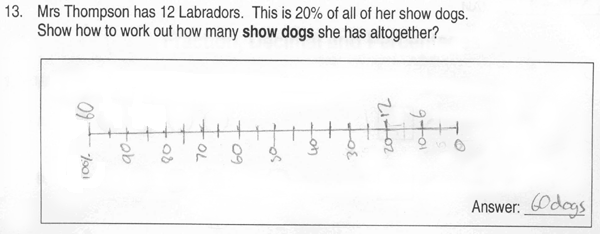Researchers: Charles Darr and Jonathan Fisher
Context: proportional reasoning (Year 7)
Two researchers taught a series of lessons on proportional reasoning to a class of Year 7 students over a 4-week period. Classroom interactions were videotaped and five students interviewed before and after the unit of work. Two instructional components were identified as promoting the kinds of attitudes and behaviours that support SRL. They were:
-
using thinking models to represent proportional problems
-
reflecting on learning in written journals.
Using thinking models to represent proportional relationships
Thinking models help students to form a representation of a problem situation. They can involve concrete objects, or be more abstract. Thinking models used included double number lines, geometrical shapes, cuisenaire rods, and decimal pipes.
The double number line
One of the most successful models was the double number line. The double number line allows the elements in a proportional relationship to be modelled on a two-sided scale.

The double-number-line was introduced to students through a series of hands-on activities involving two-litre milk containers. As a thinking tool it:
|
|
Journalling
Writing journal entries allowed students to reflect on the experiences, ideas, and feelings involved in their mathematics learning. Journalling was used on six different occasions and was often initiated with a prompt from the teacher. One example was:
"Write some instructions to a Year 5 explaining how to find two thirds of 60."
We found that using journalling:
-
allowed teachers to identify emerging thinking
-
began learning conversations between teachers and students
-
allowed teachers to give feedback
-
helped focus lesson planning
-
sometimes resulted in students sharing their journal entries with others, allowing them to observe other ways of thinking and explaining concepts.

Providing opportunities for students to observe and reflect on their own thinking is critical if they are to develop the ability to self-regulate in mathematics. Integrating thinking models and reflective journalling into the normal flow of mathematics instruction can help students become aware of their own ability to organise thinking and learn mathematics.
To read more, see this PDF document


